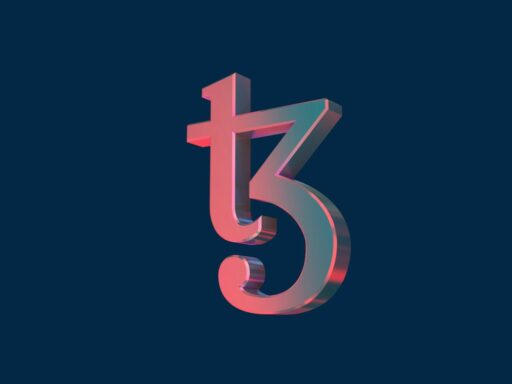Cryptocurrency mining is a pivotal component of the blockchain ecosystem, rewarding participants with digital assets for validating transactions. With the landscape of crypto mining constantly evolving, choosing the right mining software becomes a crucial decision for enthusiasts and professionals alike. This guide aims to provide a comprehensive understanding of the various aspects of crypto mining, from the underlying technology to the best profitable cryptocurrencies to mine in 2024. It will cover essential topics such as blockchain basics, mining algorithms, equipment requirements, and tips for optimizing mining setups.
Key Takeaways
- Understanding the technical foundations of blockchain and mining is essential for selecting the best mining software.
- Evaluating profitability, mining difficulty, and the sustainability of a cryptocurrency project is crucial when choosing a coin to mine.
- The choice of mining equipment and software significantly impacts mining efficiency and overall success.
- Staying informed about market trends and joining mining pools can enhance the profitability of mining endeavors.
- In 2024, the best cryptocurrencies to mine will be determined by factors such as rewards, market potential, and hardware compatibility.
Understanding Cryptocurrency Mining

The Basics of Blockchain and Mining
Cryptocurrency mining is the backbone of blockchain technology, providing the necessary computational power to validate and secure transactions. Miners play a pivotal role in the ecosystem by solving complex mathematical problems, which in turn helps to maintain the integrity and continuity of the blockchain.
- Proof of Work (PoW): The original consensus algorithm in a blockchain network. Miners compete to solve cryptographic puzzles to add new blocks to the blockchain.
- Proof of Stake (PoS): A consensus algorithm that selects validators in proportion to their quantity of holdings in the associated cryptocurrency.
- Delegated Proof of Stake (DPoS): A variation of PoS where stakeholders elect representatives to validate transactions and create blocks.
The rewards for mining can be substantial, but they come with the challenge of increasing difficulty levels and the need for significant computational resources. As the blockchain grows, so does the complexity of the puzzles to be solved, making efficient mining hardware and software essential for profitability.
Mining is not just about the immediate payoff; it’s a strategic endeavor that requires understanding the nuances of different blockchain networks and selecting the right tools for the job. Whether you’re interested in mining Bitcoin, Ethereum, or any other cryptocurrency, the key to success lies in a deep understanding of the mining process and the ability to adapt to an ever-changing landscape.
Key Mining Terminologies Explained
Cryptocurrency mining is a complex process that involves various key terminologies. Understanding these terms is essential for anyone looking to engage in mining activities. Collective Mining is a concept where miners join forces in a mining pool to increase their chances of solving cryptographic puzzles. The rewards are then shared among participants, proportional to their contributed hashing power.
Payout schemes are another critical aspect of mining pools. They dictate how rewards are distributed among pool members. Common schemes include Pay-per-Share (PPS) and Pay-per-Last-N-Shares (PPLNS), each with its unique method of calculation.
By staying informed and adaptable, miners can navigate the ever-changing landscape of cryptocurrency mining successfully.
It’s also important to consider the implications of mining hardware and software choices. As the difficulty of mining increases, selecting the right tools becomes crucial for maintaining efficiency and profitability. Continuous learning and strategic planning are key to a successful mining operation.
Different Mining Algorithms and Their Impact
Cryptocurrency mining is a diverse field with various algorithms and hardware options impacting efficiency and profitability. ASIC mining stands out for its high efficiency, tailored specifically for mining powerhouses like Bitcoin. However, the significant investment and rapid obsolescence due to technological advancements are notable drawbacks.
GPU mining strikes a balance between efficiency and flexibility, making it a preferred choice for altcoin enthusiasts. In contrast, CPU mining, once the standard, has fallen behind due to its lower efficiency.
Energy consumption is a critical factor in mining. With the high costs of electricity, miners must weigh the operational expenses against potential rewards.
Choosing the right mining algorithm and hardware is crucial for success. Here’s a quick overview of the different mining hardware types:
- CPU Mining: Accessible but less efficient; largely obsolete for competitive mining.
- GPU Mining: More powerful than CPUs; capable of faster algorithm processing.
- ASIC Mining: Offers unparalleled efficiency and speed; higher cost and quicker obsolescence.
Criteria for Selecting the Best Cryptocurrency to Mine

Profitability Analysis
When venturing into cryptocurrency mining, the cornerstone of your success hinges on a thorough profitability analysis. This analysis is a multifaceted process that evaluates the potential returns from mining activities against the costs involved.
Factors to consider in a profitability analysis include:
- Electricity costs: A major expense for miners, as mining hardware requires significant power.
- Market conditions: Fluctuations in cryptocurrency prices can dramatically affect profitability.
- Mining difficulty: As more miners join the network, the difficulty increases, potentially reducing individual rewards.
- Hardware efficiency: More efficient hardware can lead to lower operational costs and higher profitability.
It’s essential to not only calculate the immediate returns but also to consider the long-term viability of your mining operation. A short-term gain might not justify the investment if the long-term outlook is not favorable.
For instance, the profitability of Bitcoin mining can be illustrated through a simple table:
| Factor | Impact on Profitability |
|---|---|
| Electricity Cost | High impact: Lower costs favor profitability |
| Bitcoin Price | Direct correlation: Higher prices increase potential returns |
| Mining Difficulty | Inverse relationship: Higher difficulty lowers individual rewards |
| Hardware Efficiency | Positive effect: More efficient hardware enhances profitability |
Remember, profitability is not static and requires constant reassessment to adapt to the ever-changing landscape of cryptocurrency mining.
Mining Difficulty and Network Hash Rate
Mining difficulty is a dynamic metric that reflects the complexity of the cryptographic challenges miners must solve to add new blocks to the blockchain. As the number of participants in the mining network increases, the difficulty adjusts to ensure that the time taken to find a new block remains consistent. This adjustment mechanism is crucial for maintaining the blockchain’s stability and security.
Understanding the network hash rate is equally important. The hash rate represents the total computational power of all miners combined and is a key indicator of the network’s overall health and competitiveness. A higher hash rate means more security for the network but also signifies increased competition among miners.
Miners must continuously monitor both mining difficulty and the network hash rate to gauge their potential mining rewards and the likelihood of success. These factors directly influence the profitability and feasibility of mining operations.
Here’s a quick look at how these metrics can impact your mining strategy:
- Mining Difficulty: As difficulty rises, miners need more powerful hardware to maintain profitability.
- Network Hash Rate: An increasing hash rate suggests more miners are competing for the same rewards, necessitating strategic planning to stay ahead.
Long-Term Sustainability and Project Roadmap
When selecting a cryptocurrency to mine, it’s crucial to consider the long-term sustainability of the project. This involves evaluating the development team’s roadmap and the project’s commitment to innovation and growth. A well-defined roadmap can indicate a project’s potential for longevity and success.
- Incremental Growth: Gradually adding miners can help manage costs and adapt to market changes.
- Energy Efficiency: Prioritize energy-efficient hardware and consider renewable energy sources to enhance profitability.
- Accessibility: Ensure the mining process is accessible and hardware is readily available.
- Sustainability: Opt for cryptocurrencies with lower environmental impact.
- Reliability and Redundancy: Build a robust network and maintain redundancy to minimize downtime.
By focusing on these factors, miners can build a profitable crypto mining rig that is equipped for long-term success. Regular maintenance and staying informed about market trends are also key to sustaining profitability.
Choosing the Right Mining Equipment and Software

Comparing Popular Mining Software Options
Selecting the right mining software is a pivotal decision for any crypto miner. The software not only affects your mining efficiency but also plays a crucial role in the overall profitability of your mining operation. Choosing the best mining software involves comparing various options based on their features, compatibility, and user experience.
When comparing popular mining software, it’s essential to consider the following:
- CGMiner: Known for its versatility and open-source nature, CGMiner is a favorite among veteran miners. It supports multiple types of hardware and offers advanced monitoring and control features.
- Claymore’s Dual Ethereum Miner: This software allows for dual mining, meaning it can mine Ethereum as well as another cryptocurrency simultaneously, maximizing potential profits.
- NiceHash Miner: Ideal for beginners, NiceHash provides a user-friendly interface and the convenience of mining multiple cryptocurrencies with payouts in Bitcoin.
It’s important to note that while some software may be more user-friendly, others might offer more in-depth analytics and customization options. Your choice should align with your technical expertise and mining goals.
Lastly, always keep an eye on the market trends and software updates, as these can significantly impact your mining success. The right software today might not be the best choice tomorrow, so staying informed and adaptable is key.
Hardware Requirements for Efficient Mining
Selecting the right mining hardware is pivotal for the success and efficiency of your mining operations. Energy efficiency is a key factor, as the cost of electricity can greatly affect overall profitability. Look for hardware with a favorable hash rate-to-power ratio to ensure better performance per watt.
Cooling is another critical aspect. Mining equipment generates considerable heat, which must be managed to prevent damage and maintain operational efficiency. Ensure your setup includes an adequate cooling system to handle the heat produced during mining.
When considering hardware options, it’s also important to evaluate their longevity and scalability. The mining landscape is constantly evolving, and choosing hardware that can adapt to changes is crucial for sustained mining success.
The right hardware not only enhances the efficiency of mining operations but also contributes to their longevity and scalability.
For those on a budget, it’s possible to find effective mining GPUs under $200. A guide comparing AMD and Nvidia options, such as the Gigabyte GTX 1050 Ti and MSI GTX 1650 Super Ventus, can help you make an informed decision.
Balancing Performance and Energy Consumption
In the realm of crypto mining, balancing performance with energy consumption is a critical aspect that can significantly influence overall profitability. Miners must strive for the highest hash rates while keeping power usage to a minimum. This delicate balance is not only cost-effective but also environmentally responsible.
- TWEAKING SETTINGS FOR OPTIMAL PERFORMANCE
- GUIDELINES FOR PROPER AIRFLOW AND COOLING
- Energy Efficiency: Bitcoin mining is power-intensive, and electricity costs can significantly impact profitability. It is crucial to choose hardware that is energy-efficient to reduce electricity consumption and lower operational costs. Look for mining machines with a high hash rate-to-power ratio, as they provide better performance per watt.
By regularly updating your firmware, fine-tuning operational settings, and closely monitoring key performance metrics, you can significantly enhance your mining rig’s efficiency. The goal is to achieve the highest possible hash rate with the lowest energy consumption and maintain your hardware in good condition for a profitable and sustainable mining operation.
Tips for Successful Cryptocurrency Mining

Optimizing Your Mining Setup
To achieve the best results in cryptocurrency mining, it’s essential to optimize your mining setup. This involves a combination of selecting the right mining pool, configuring your hardware, and staying vigilant about the performance of both.
- Pre-setup considerations are crucial. Choose an optimal location for your mining hardware to ensure adequate cooling and power supply.
- Regularly monitor your setup and the mining pool’s performance to catch any issues early and maintain efficiency.
- Consider advanced options like custom firmware to potentially increase performance, but be aware of the risks involved.
By strategically planning your operation’s growth and engaging with the mining community, you can stay ahead in the dynamic world of cryptocurrency mining.
Remember, the key to successful mining is not just the hardware but also your strategies and adaptability to changes in the crypto landscape.
Understanding and Joining Mining Pools
Joining a mining pool is a strategic move for any miner looking to increase their chances of earning cryptocurrency rewards. Mining pools are akin to lottery syndicates, where miners combine their computational power to compete more effectively against the immense collective power of other miners and pools.
When selecting a mining pool, consider the pool’s reputation, fee structure, and payout frequency. Here’s a simple list to guide you through the process:
- Research and compare different mining pools.
- Evaluate the fee structure and payout policies.
- Choose a pool with a good track record and compatible with your mining hardware.
- Configure your mining software to connect to the chosen pool.
By pooling resources, miners can expect more consistent payouts, as rewards are shared among participants based on their contributed hash power.
Remember, the goal is to maximize your mining efficiency and profitability. Therefore, it’s crucial to monitor market trends and adjust your mining strategies accordingly. This proactive approach will help you stay competitive in the ever-evolving landscape of cryptocurrency mining.
Staying Updated with Market Trends
In the dynamic world of cryptocurrency mining, staying informed about market trends is imperative for maintaining profitability. Regularly monitoring price fluctuations, mining difficulty, and network changes can help you adjust your strategies in real-time. Utilize market analysis tools to access real-time and historical data, aiding in comprehensive cryptocurrency data analysis.
Adapting to market shifts is not just about reacting to changes; it’s about anticipating them to stay ahead.
It’s also essential to keep an eye on regulatory updates and technological advancements. These factors can significantly influence the crypto mining landscape. For instance, a change in electricity costs can necessitate a reassessment of your mining operations to ensure they remain cost-effective.
Remember, the key to successful mining is not just about the hardware or software you choose; it’s also about how well you understand and react to the ever-evolving cryptocurrency market.
Best Profitable Crypto to Mine in 2024

Top Cryptocurrencies for Mining and Their Rewards
In the dynamic world of cryptocurrency, mining remains a potentially lucrative activity. Bitcoin (BTC) continues to be a premier choice for miners, offering significant rewards due to its market dominance and value. However, the landscape is diverse, with several altcoins providing competitive mining opportunities.
- Ethereum (ETH): Known for its smart contract functionality, ETH offers substantial rewards, though it’s transitioning to a proof-of-stake model.
- Litecoin (LTC): Favoured for its faster transaction times compared to Bitcoin, LTC provides a steady mining option.
- Ravencoin (RVN): With a focus on asset transfer, RVN is gaining traction among miners for its accessibility and profitability.
The choice of cryptocurrency to mine should align with individual goals, resources, and the market environment. It’s essential to conduct a thorough profitability analysis and consider the long-term sustainability of the project.
This guide will delve into the specifics of each cryptocurrency, including their mining algorithms and hardware requirements, to aid in making an informed decision.
Emerging Coins with Potential for High Returns
As the crypto landscape evolves, certain emerging coins show promise for high returns in 2024. AVAX, with its strong team and community support, is poised to capture significant market share in the DeFi and NFT sectors. This could potentially catapult it into a major blockchain player.
While established cryptocurrencies like Bitcoin continue to dominate the mining scene, altcoins with lower market capitalization and mining difficulty present attractive opportunities for miners. These coins often offer higher profit margins, especially for those with limited resources.
The volatile nature of cryptocurrency prices, mining difficulty, and market demand are critical factors that can drastically affect mining profitability. Miners must remain vigilant and adapt their strategies to these changing conditions to ensure success.
Here’s a look at some of the top emerging cryptocurrencies for mining in 2024:
- AVAX: A strong contender in the DeFi and NFT markets.
- XYZ Coin: Noted for its innovative consensus mechanism and low entry barrier.
- Alpha Token: Gaining traction for its scalability solutions and community-driven development.
It’s essential to conduct a thorough profitability analysis and keep abreast of market trends to identify these high-potential coins early on.
FAQs on Cryptocurrency Mining Choices
When venturing into the realm of cryptocurrency mining, several frequently asked questions arise, particularly regarding the selection of the most suitable coin to mine. The choice of cryptocurrency is pivotal to the success of mining endeavors and hinges on a multitude of factors, including profitability, accessibility, and the miner’s individual circumstances.
- Profitability: It is essential to assess the mining rewards and potential earnings. Coins like Monero are often highlighted for their profitability, especially for those prioritizing privacy.
- Accessibility: Some cryptocurrencies, such as QuarkChain, are lauded for their ease of mining on less powerful devices like laptops, while others may require more robust setups.
- Volatility: The fluctuating nature of the crypto market means that profitability can change rapidly, making it crucial for miners to stay agile and adapt their strategies.
The volatile nature of cryptocurrency prices, mining difficulty, and market demand can all significantly impact your potential earnings.
For beginners, the best cryptocurrency to mine might be one that balances ease of mining with potential returns. Dogecoin, for example, has gained popularity for being mineable with PCs, making it accessible to a wider audience. However, mining comes with inherent risks, and it’s important to continuously monitor market conditions and adjust your approach as needed.
Conclusion
In summary, the journey to selecting the best crypto mining software is multifaceted, involving careful consideration of the cryptocurrency you intend to mine, the hardware at your disposal, and the mining pool that aligns with your goals. This guide has provided insights into the most profitable cryptocurrencies to mine in 2024, the importance of choosing the right mining equipment and software, and tips for successful mining operations. Whether you’re a seasoned miner or new to the scene, understanding these elements is crucial for optimizing your mining efforts and ensuring a rewarding experience. Remember to stay informed about market trends, technological advancements, and community insights as you embark on your crypto mining adventure.
Frequently Asked Questions
How do I choose the best mining pool?
Choosing the right mining pool depends on factors like the cryptocurrency you’re mining, hardware preferences, payout methods, and pool size. Your choice of mining pool can have a significant impact on your earnings and overall mining experience. Consider the pool’s fees, server location, reputation, and the transparency of its operations when making your decision.
What are the best crypto mining sites?
The best crypto mining sites provide detailed analytics, mining profitability calculators, and current mining pool statistics. Platforms like Minerstat and NiceHash are highly regarded for offering insights into the profitability of various cryptocurrencies, including emerging coins that may present the best mining opportunities.
What crypto is best for crypto mining?
The best cryptocurrency for mining varies based on market conditions, hardware availability, and electricity costs. While Bitcoin has been historically popular, altcoins such as Ethereum, Litecoin, or Ravencoin may offer higher profitability or accessibility. The ideal choice depends on individual circumstances and market trends.
What criteria should I consider when selecting the best cryptocurrency to mine?
When selecting a cryptocurrency to mine, consider factors such as profitability, mining rewards, potential monthly profits, accessibility, network hash rate, mining difficulty, long-term sustainability, and the project’s roadmap. These criteria will help you evaluate which cryptocurrency offers the most lucrative and sustainable mining opportunities.
What are the essential hardware requirements for efficient mining?
Efficient mining requires hardware that offers a high hash rate, energy efficiency, and compatibility with the cryptocurrency’s mining algorithm. Research and compare different hardware options, including ASIC miners for Bitcoin and high-performance GPUs for altcoins, to ensure optimal mining performance and energy consumption.
How can I optimize my cryptocurrency mining setup?
To optimize your mining setup, focus on selecting the right equipment and software, joining an appropriate mining pool, and staying updated with the latest market trends and technological advancements. Regularly analyze your setup’s performance, adjust your strategies, and invest in hardware upgrades when necessary to maintain efficiency.





